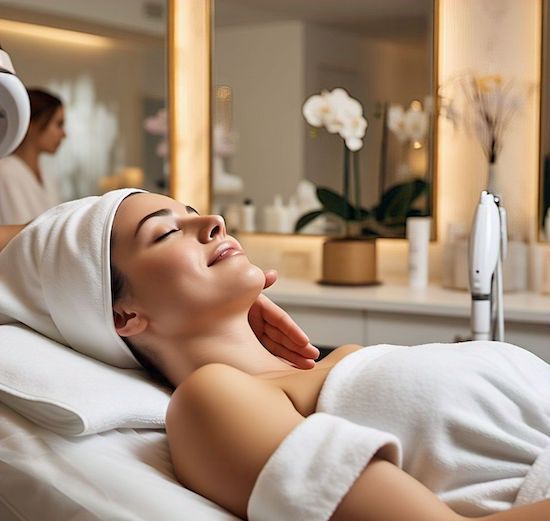Skincare can be overwhelming, especially for beginners. With endless products, routines, and beauty trends circulating online, it’s easy to feel lost or pressured into using the wrong items. But the truth is, healthy skin starts with the right knowledge and safe choices. This guide will help you understand the essential skincare products, how to use them effectively, and the potential risks of using products that don’t suit your skin.
1. Know Your Skin Type First
Before purchasing any skincare product, it’s essential to identify your skin type. The most common types are:
- Oily: Shiny, acne-prone, large pores
- Dry: Flaky, tight, or rough patches
- Combination: Oily in the T-zone, dry on the cheeks
- Sensitive: Easily irritated, often red or itchy
- Normal: Balanced, not too oily or dry
Choosing products that match your skin type ensures better results and minimizes unwanted reactions.
2. Start With the Basics: The Core Skincare Trio
For beginners, a basic routine with three key products is a great start:
- Cleanser: Removes dirt, oil, and impurities. Use one that matches your skin type—gel for oily, cream for dry, and gentle formulas for sensitive skin.
- Moisturizer: Hydrates and strengthens the skin barrier. Even oily skin needs moisture to prevent overproduction of oil.
- Sunscreen (SPF 30+): Protects against UV damage, which causes aging, sunburn, and skin cancer. Apply daily, even indoors.
This simple routine builds a strong foundation without overwhelming your skin.
3. Add Serums and Treatments Slowly
Once you’re comfortable with the basics, you can introduce serums and targeted treatments. These include:
- Vitamin C serum: Brightens skin, fades dark spots, protects against environmental damage.
- Niacinamide: Balances oil, reduces redness, improves texture.
- Hyaluronic acid: Boosts hydration without clogging pores.
- Retinol (at night): Reduces fine lines, acne, and signs of aging—but must be used carefully.
Always patch test new treatments and introduce one at a time.
4. The Risks of Using the Wrong Skincare Products
Using skincare that doesn’t match your skin type or concerns can cause several problems:
- Breakouts and acne: Rich or pore-clogging ingredients on oily skin can cause pimples.
- Dryness or flaking: Overusing exfoliants or using alcohol-based products can strip your skin.
- Irritation or allergic reactions: Fragrance, essential oils, or harsh ingredients can lead to redness, itching, or even chemical burns—especially on sensitive skin.
- Worsening of existing skin issues: For example, using acne treatments too often can damage the skin barrier and increase sensitivity.
- Hyperpigmentation: Inappropriate use of active ingredients like acids or retinol without sunscreen can darken spots instead of fading them.
That’s why it’s crucial to research and use products suited to your unique skin.
5. Signs a Product Isn’t Right for You
If you’re unsure whether a product is working, watch for these warning signs:
- Burning or stinging sensation (unless using certain actives under guidance)
- Increased breakouts after 2–3 weeks
- Red patches or inflammation
- Dry, tight, or peeling skin without improvement
If any of these occur, stop using the product and let your skin recover. Consult a dermatologist if needed.
6. How to Build a Safe Routine Step-by-Step
Here’s a safe routine you can build gradually:
- Weeks 1–2: Start with a gentle cleanser, basic moisturizer, and sunscreen.
- Weeks 3–4: Add a hydrating serum like hyaluronic acid.
- Month 2+: Introduce a treatment serum (like niacinamide or vitamin C) every other day.
- Later: Try retinol or exfoliating acids—only when your skin is ready.
Consistency is more important than speed. Skincare is a marathon, not a race.
7. Choose Safe and Reliable Products
When shopping for skincare, consider:
- Dermatologist-tested brands with good reputations
- Fragrance-free and alcohol-free for sensitive skin
- Non-comedogenic (won’t clog pores)
- Checking ingredient labels
- Reading real reviews, not just influencers
You don’t need expensive products—what matters is how your skin responds.
8. Everyone’s Skin Is Different—Don’t Copy Others Blindly
Just because a product works for someone else doesn’t mean it’s right for you. Factors like genetics, environment, hormones, and lifestyle all affect your skin. Trust your own experience and observe how your skin reacts.
9. Final Thoughts: Glow Safely, Not Just Quickly
Skincare is a personal journey. The goal isn’t perfection—it’s health. Be patient, go slow, and don’t fall for every trend. Stick to what your skin loves and listen to its signals. When in doubt, consult a dermatologist.
Remember: The safest glow is the one you build with care, knowledge, and consistency.
